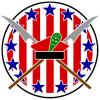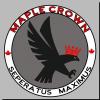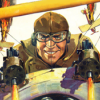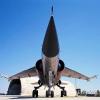This morning, checked out the FM adjustments to the Nieuport range of aircraft WIPs. VonS, and especially Crawford, have slowly ground their way through the hodge-podge of old files to develop new ones to match the new 3D models. The aircraft now destruct fairly realistically, given the limited effort I make when developing new 3D models. They do outstanding work.
Also tweaked the artwork for the Vickers guns - they were a bit too darkish. As shown in the Sopwith Triplane shot, most machine guns are various shades of dark gray, not black. Shots of Br14 show the revisions to the Vickers artwork.
For you camo buffs, the Br14 is finished in the Michelin factory pattern - there were several others as each contractor had their own interpretation of French government guidelines.
















